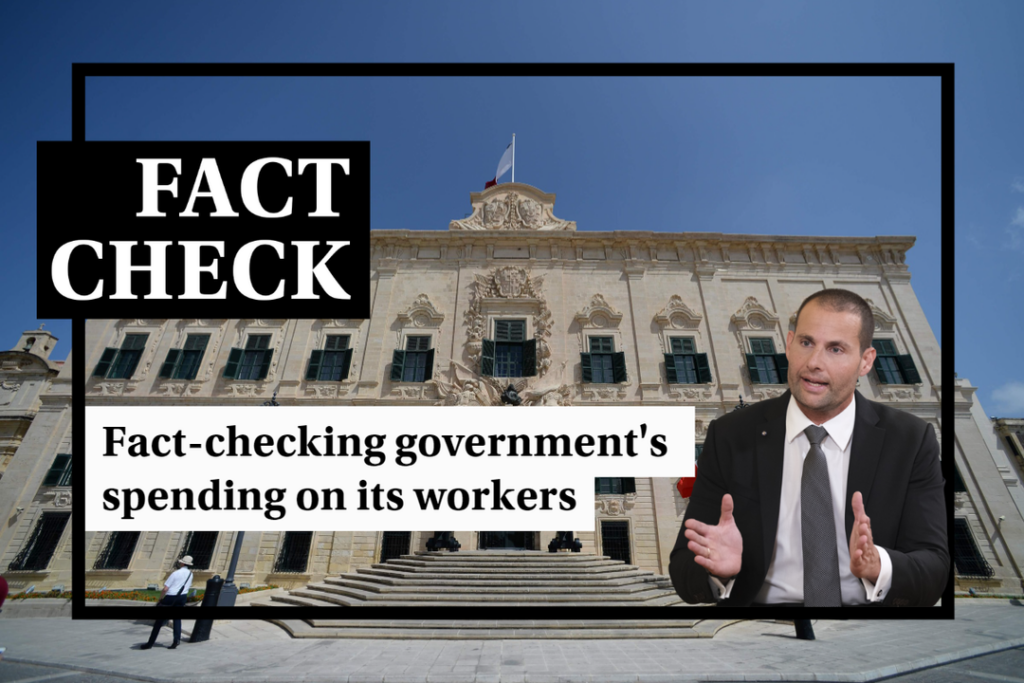Speaking during the closing of the Labour Party’s general conference on Sunday 16th April, Prime Minister Robert Abela claimed that government now spends €1.2 billion on salaries for government workers, double the amount spent 10 years ago.
Celebrating the government’s economic successes over the past decade, Abela was keen to point to the improved working conditions brought about by new collective and sectoral agreements as evidence of how workers are reaping the rewards of the country’s economic growth.
Abela said that “although the private sector remains the driving motor behind job creation, we now spend €1.2 billion per year on the wages of government workers, double the amount in 2013”.
Has government really doubled its payroll?
Precise data covering all forms of government employment is hard to come by, with different data covering different public entities or bodies across the public sector.
The most recent national data for the government’s consolidated fund shows that Malta spent just over €1.1 billion on wages for government employees in 2022. This figure stood at €612m in 2012.
This would suggest that while the expenditure has not quite doubled, as claimed by Abela, it nonetheless represents a hefty 84% increase.
The expenditure on government wages has risen consistently throughout the past decade, topping €1b for the first time in 2021.
Government wages during the previous decade of 2002 to 2012 also increased although at a markedly slower rate, rising from €457m to €612m during this period, or a 33% increase.
Separate Eurostat data, also compiled by the National Statistics Office, also includes government expenditure on wages across the broader public sector, including the various public entities, as well as local councils.
This data suggests a similar pattern, with expenditure swelling from €849m in 2012 to €1.6b in 2021, the most recent year for which data is available, for an overall 95% increase.
Wages had increased by 50% in the previous decade, rising from €564m in 2002 to €849m in 2012.
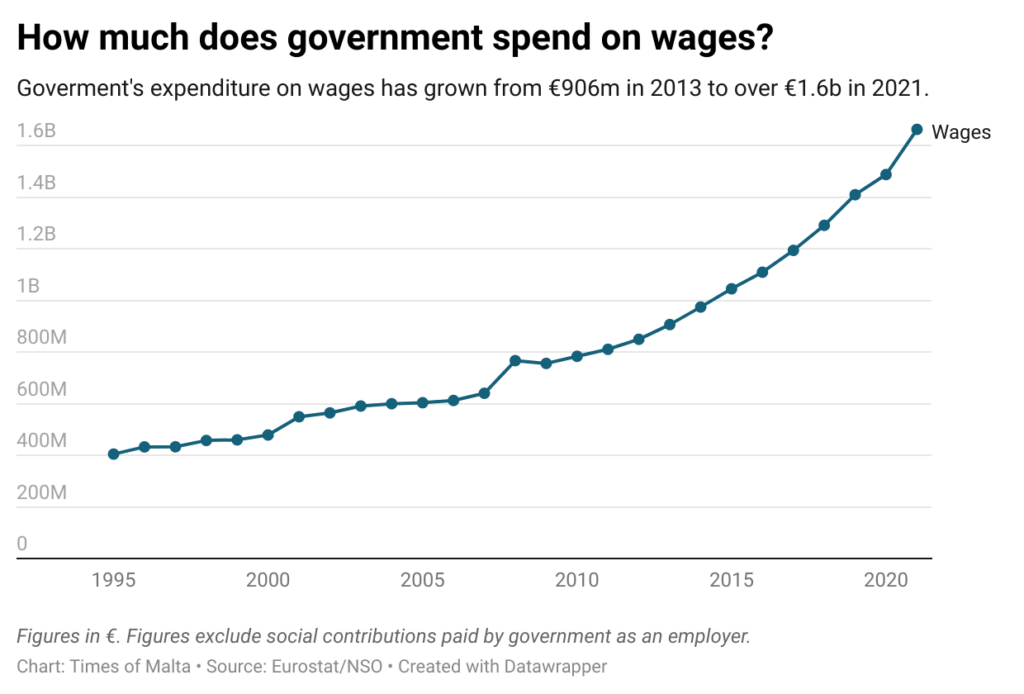
How does this compare to government’s overall spending?
Over the past decade, the government’s overall spending increased by a staggering 119%, rising from €3b in 2012 to over €6.7b in 2022.
Wages for government employees hovered at around 20% of total spending until 2020 when it suddenly dipped to just under 17%.
The latest data suggests that the government’s 2022 payroll was 16.7% of its total expenditure in 2022.
How many people does the government employ?
According to NSO data, a total of 51,385 people were employed within the public sector by the end of 2022.
This has risen by almost 10,000 since 2013, when 41,917 people were employed by the government, marking an almost 23% increase in just 10 years, broadly in line with the overall increase in Malta’s population over the past decade.
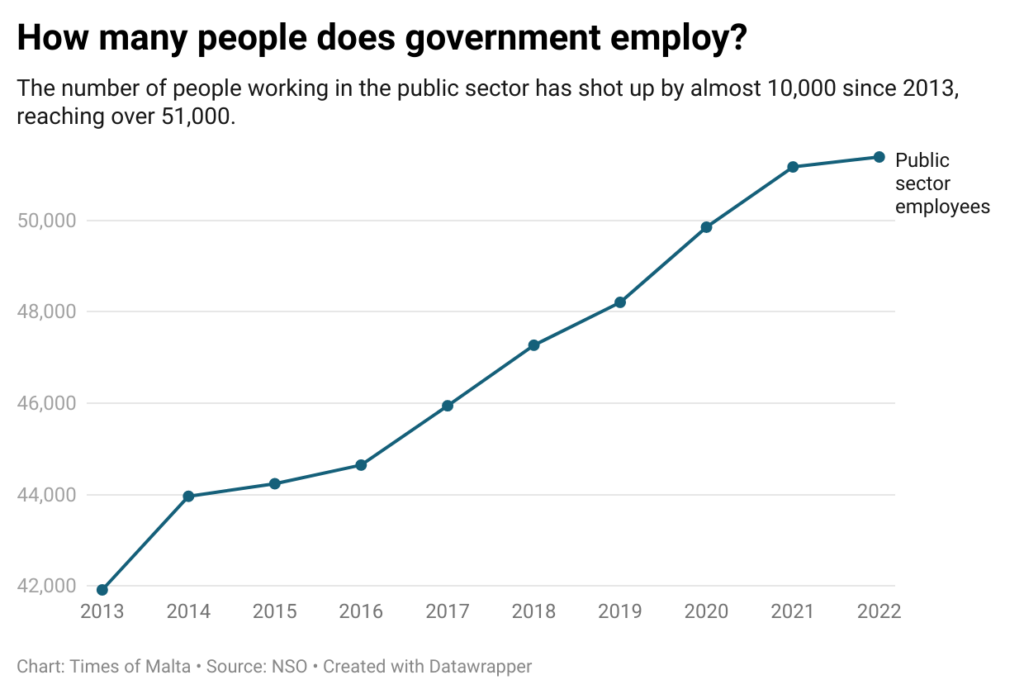
This comes despite historical warnings that Malta’s public sector is inflated and needs to shed workers.
A report by the Malta Employers Association as far back as 2004 described the public sector, which at the time employed over a third of Malta’s workforce, as “overmanned and expensive to sustain”.
More recently, several constituted bodies warned against a surge in public sector employment, arguing that this is creating shortages within the private sector. Likewise, the former chair of the Chamber of Commerce spoke of the worrying movement of workers from the private to the public sector, calling on the public sector to cut down on workers and reduce the government’s payroll.
Public sector employment is often believed to swell in the run-up to elections, with data showing that full-time employment in the public sector grew by 500 jobs prior to the 2017 election.
The Malta Employers’ Association criticised this practice in a position paper as recently as 2021, calling for a rationalisation of public sector employment and redeployment of excess workers to the private sector.
How much of Malta’s workforce is made up of government workers?
In total, just under one in five workers in Malta is employed with the government.
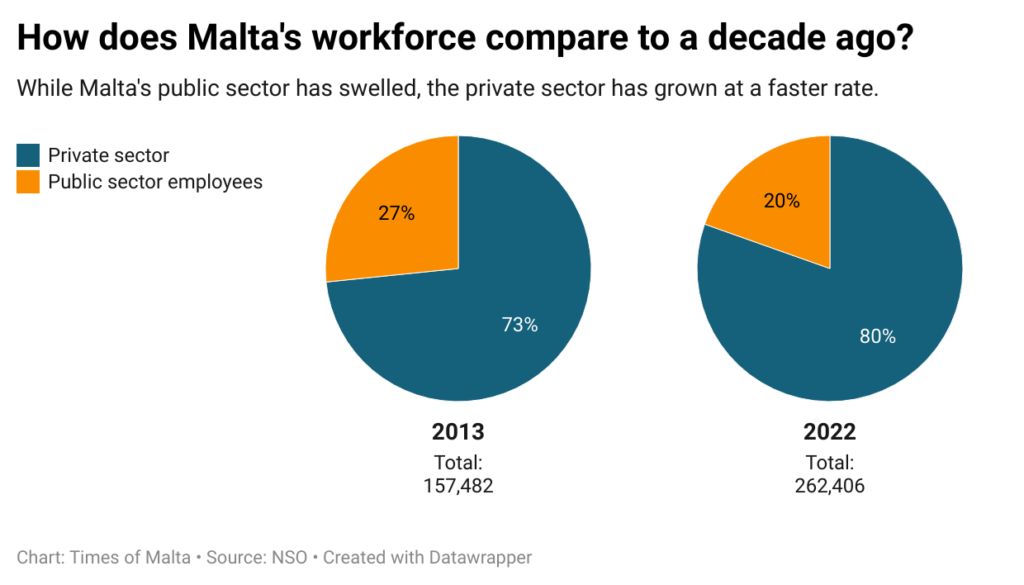
However, data shows that despite the significant increase in public sector employees, this has been outpaced by the growth of the private sector and now makes up a smaller share of total employment than at any point over the past decade.
While the public sector made up almost 27% of the total workforce in 2012, this has now dipped to just under 20% in 2022.
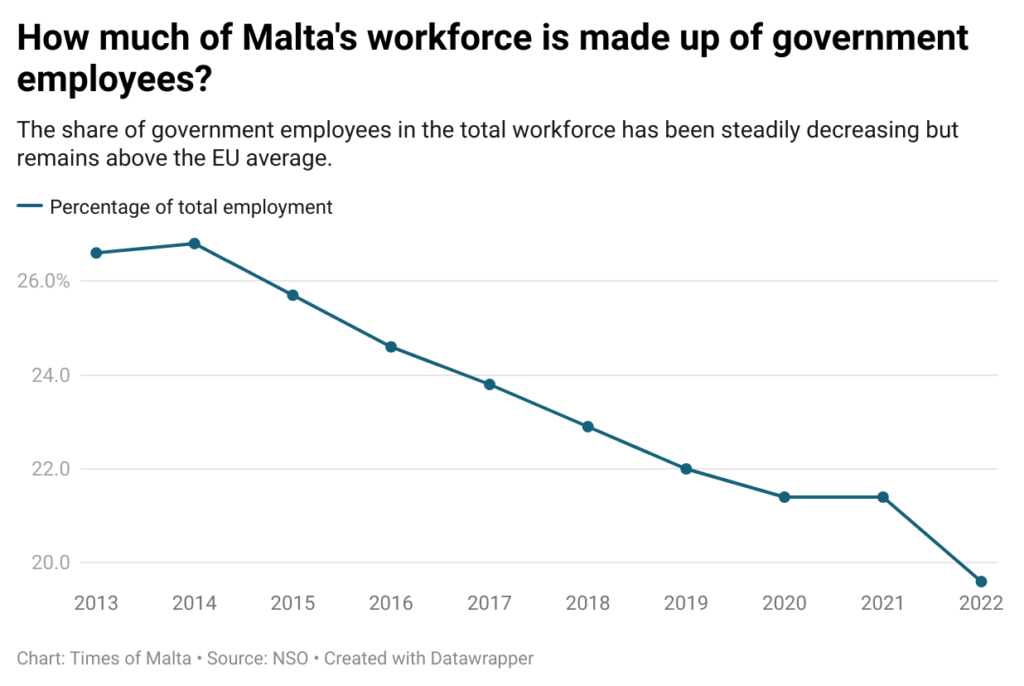
This remains above the EU average, which stood at 16% as of 2020.
Eurostat data suggests that Malta experienced the largest drop in Europe in terms of the share of government employees forming part of the workforce over the past two decades.

How efficient is the public sector?
Data on the efficiency of the public sector is scarce.
A 2017 analysis by the Economic Policy Department found that real productivity in the public sector grew by 1.1% between 2010 and 2015, an almost identical rate to that of the total economy which grew by 1.2% during the same period.
Meanwhile, the analysis estimated that wages in the public sector increased by 3.5% per year during the same five-year stretch.
A more recent study carried out by the Central Bank of Malta also found that labour productivity grew by 1.2% between 2000 and 2019, although it does not specifically investigate the productivity of the public sector.
Verdict
Government expenditure on wages grew by €514m over the past decade, an increase of 84%. Meanwhile, the number of public sector workers grew by almost 10,000, or 23%.
Nonetheless, the public sector’s share of the total workforce has been shrinking to now reach 20%. This remains slightly higher than the EU average of 16%.
Data on the efficiency of the public sector is not available, making it difficult to evaluate whether the investment in the public sector is reaping rewards. Nonetheless, the data that does exist indicates that productivity in the public sector tends to grow at similar rates as that in the private sector.
The Times of Malta fact-checking service forms part of the Mediterranean Digital Media Observatory (MedDMO) and the European Digital Media Observatory (EDMO), an independent observatory with hubs across all 27 EU member states that is funded by the EU’s Digital Europe programme. Fact-checks are based on our code of principles.
Let us know what you would like us to fact-check, understand our ratings system or see our answers to Frequently Asked Questions about the service.

